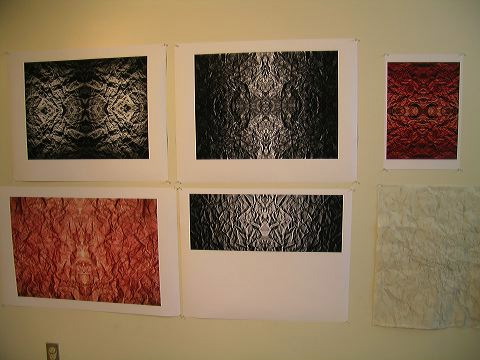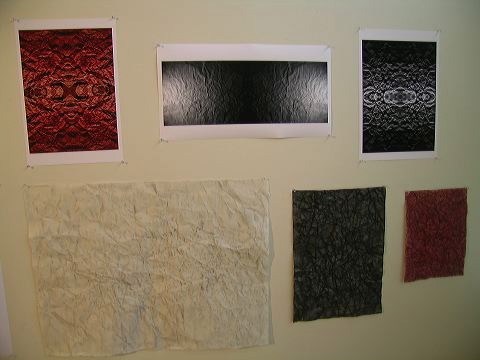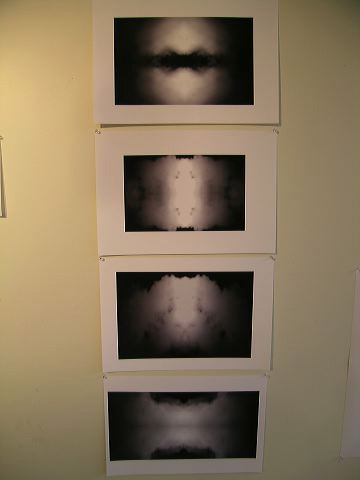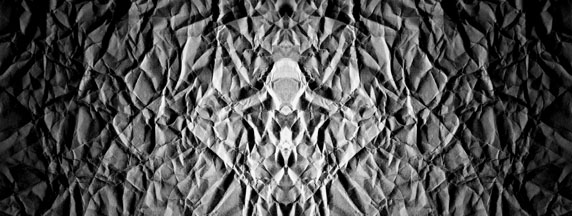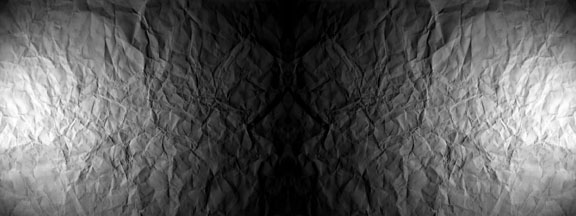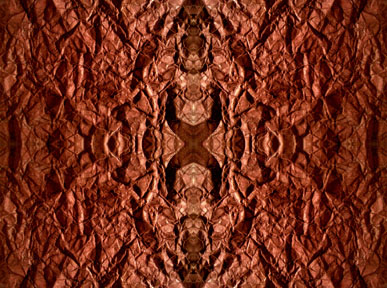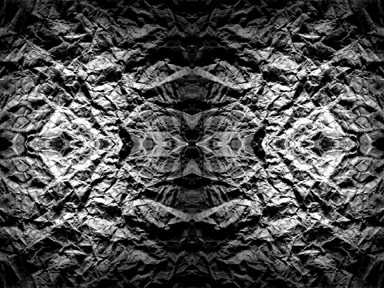
This body of work could most appropriately be referred to as an experiment.
As a continuation of the drawings of light and shadow on wrinkled paper, these
prints represent a new direction in that process or an augmentation of my
original intentions. The original drawings themselves were meditative, experiential.
The tools used were paper, light, drawing supplies, and sight. The process
was personal, indexical, tactile. This new body of work stems from these drawings
but introduces a completely new, contrasting set of tools and experiential
qualities.
My work in recent years has been centered around the ideas of technology, artificiality, and the landscape we inhabit both internally and externally as a result of their permeation into our daily lives. However, I have always referenced these ideas in the total absence of their associated tools, such as digital technology, video, or photography. My work both referred to technology and contrasted with it, in that I created images in a very labor-intensive, slow, human process like rendering a large grid of pixels in charcoal one by one, or painting with oils an interpretation of the real world, translated into pixels by hand and eye only.
This body of work is the first time in which I actively participate in the use of technology to create images. I began with digital photography, capturing images of the wrinkled paper drawings. I paid close attention to lighting these drawings, and carefully achieving high quality, high-resolution images. Once I had accumulated an impressive collection of these images, I made use of the computer as a particular tool, or medium, for image creation. I set limitations on the ways in which the images would be manipulated, but I intended to utilize the abilities inherent in the medium of digital technology to create something that would otherwise be impossible for a human being to achieve. Perfect symmetry became the prominent feature of this work. By creating mirror reflections of the images and repeating them two or four times to produce perfectly symmetrical illusions of deeply humanistic, tactile drawings, I am questioning what effects artificiality and technology have on the real. The prints that came out of the printer are of course real objects that one can touch and experience, but are they less real that the drawings because they have been broken down into ones and zeros, translated and transmitted and interpreted by machinery that I only used as a tool and have very little true sense of how it works? Would they be less real still if they were never printed out, but only displayed on slick digital screens that dispel any notion whatsoever that these images are real objects? These are questions I am interested in, and they are ideas that I have experimented with here.

